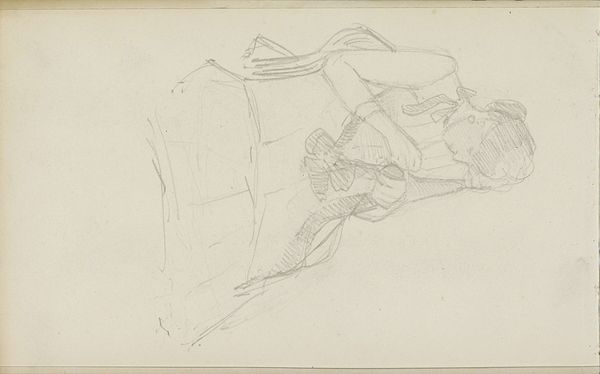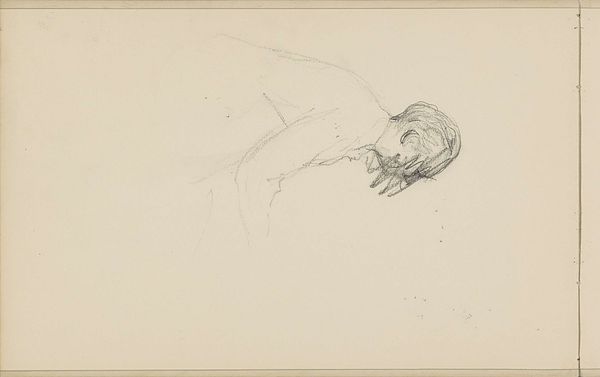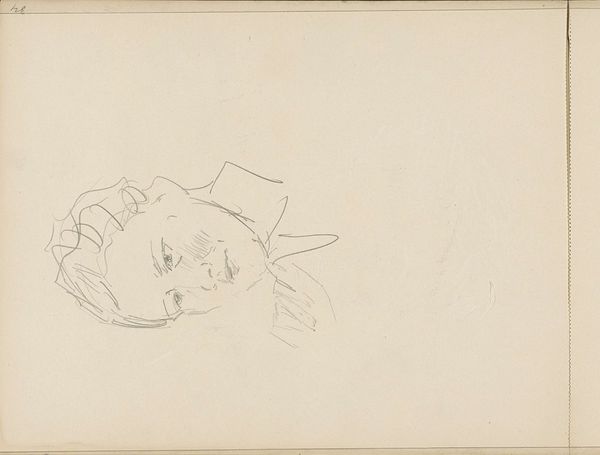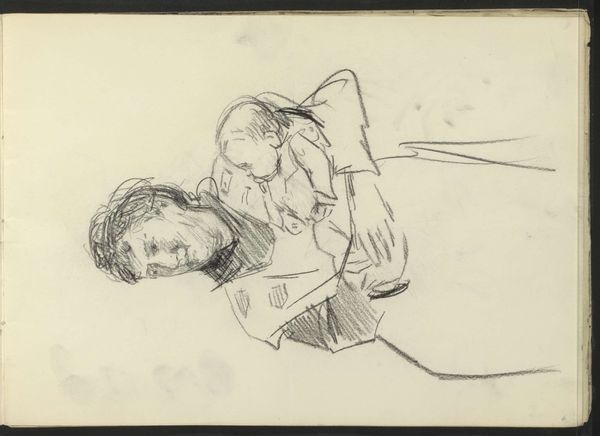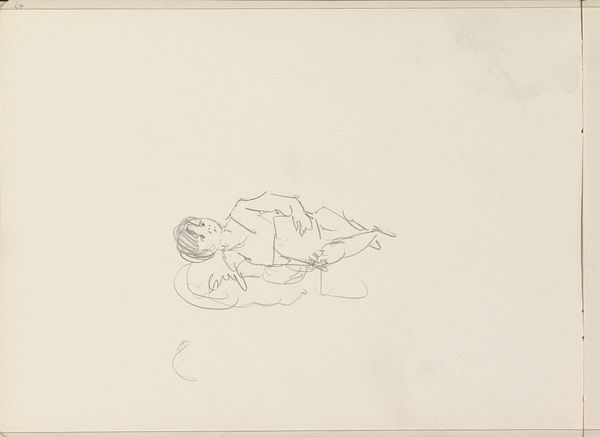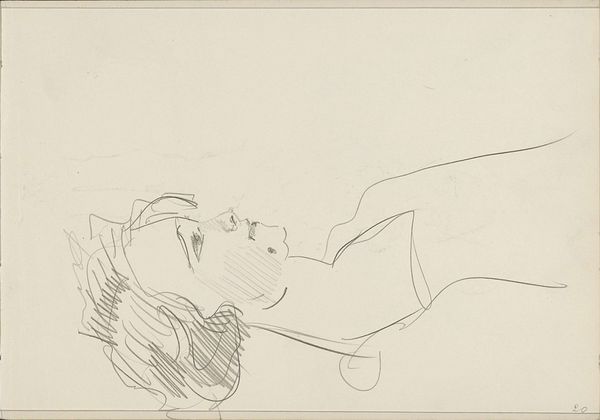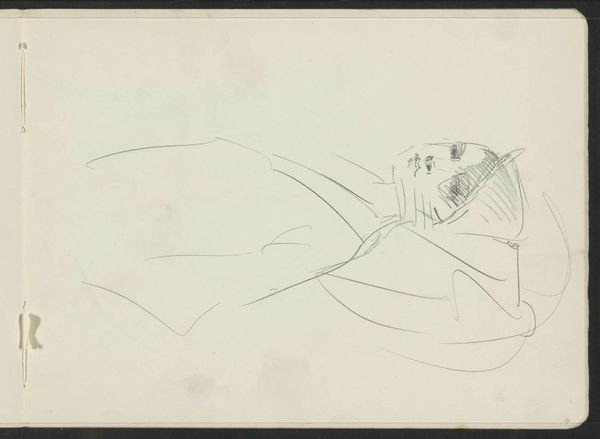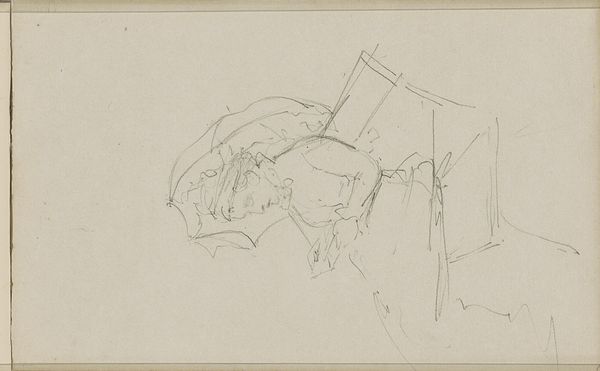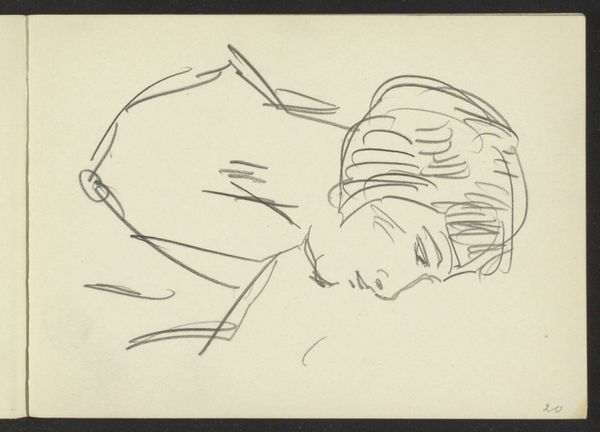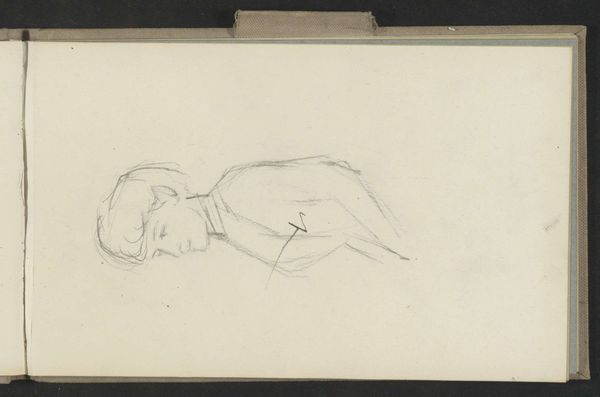
drawing, pencil
#
portrait
#
drawing
#
figuration
#
pencil
#
nude
Copyright: Rijks Museum: Open Domain
Editor: This drawing, "Vrouwelijk naakt met hanger" – Female Nude with Pendant – is by Isaac Israels, created sometime between 1915 and 1925. It's a pencil sketch of a reclining nude. I find the sketchiness very intimate, like glimpsing a private moment. What strikes you about this piece? Curator: It's fascinating how Israels uses such simple lines to convey not just form, but also a sense of vulnerability. Think about the period – the early 20th century. There's a growing interest in representing the human form outside the academic, often idealised, traditions. This sketch feels more immediate, reflecting a shift in the public's and artists' perception and acceptance of different bodies. It feels closer to real life, don't you think? How does the pendant contribute, in your view? Editor: Good point. I hadn't considered it within that social context. I suppose the pendant subtly alludes to her status and maybe even the commercialisation of the female form in art. Perhaps she is resting during a sitting for a painter. Curator: Exactly! And considering the history of the nude in art, predominantly painted for male consumption, Israels' work could be viewed as participating in that, or subtly challenging it by showing her in a moment of rest. Also note its home at the Rijksmuseum. What does it mean for this artwork, which could have been seen as shocking at the time, to now be an important art historical artefact? Editor: That's interesting. Displaying it normalises it and adds it to the mainstream of art history. But it also brings questions about what’s considered art and why, which institutions like museums dictate. I've definitely learned more about interpreting this sketch! Curator: Precisely. It prompts us to think about evolving social norms, power dynamics in art, and how the politics of representation shifts over time.
Comments
No comments
Be the first to comment and join the conversation on the ultimate creative platform.
